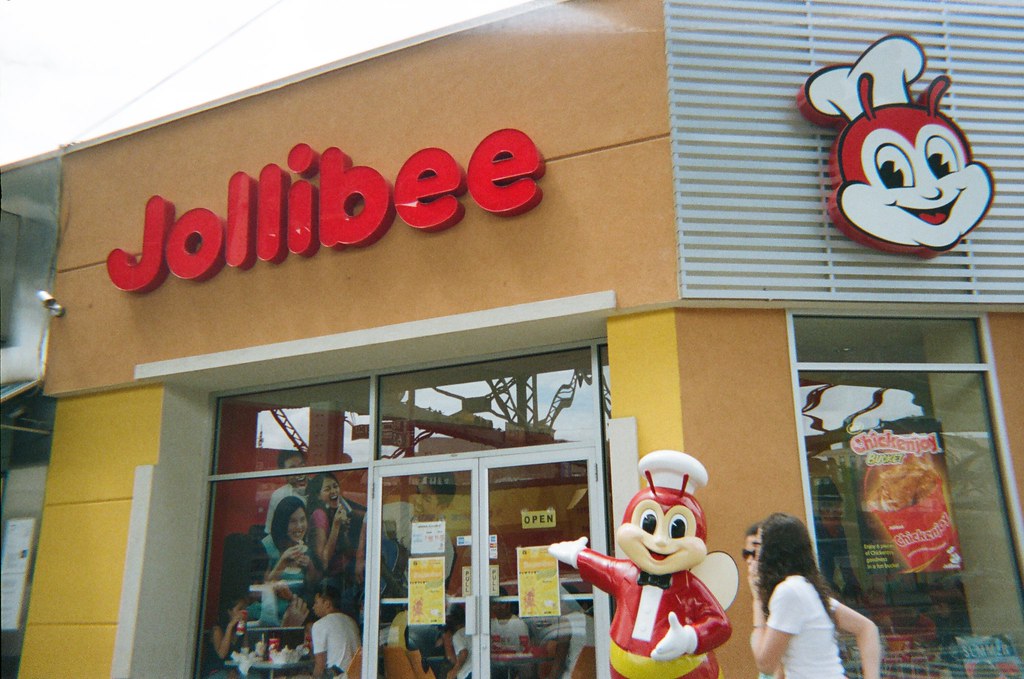The history of Jollibee is a fascinating journey that started as a small ice cream parlor and grew into one of the most successful and beloved fast-food chains in the Philippines and beyond. Here’s a comprehensive guide to the history of Jollibee:

1. Founding and Early Days (1975-1978):
- 1975: Jollibee’s story begins with the opening of an ice cream parlor in Cubao, Quezon City, Philippines, by Tony Tan Caktiong and his family. The parlor was named “Jolibe.”
- 1977: Inspired by the success of McDonald’s, Tony Tan decided to expand the menu to include hot meals, signaling the transition from an ice cream parlor to a fast-food establishment.
- January 28, 1978: The first official Jollibee store opened along J.P. Laurel Street in Quezon City.
2. Early Success and Signature Dishes (1980s):
- Jollibee gained early success with its unique blend of Western fast-food items and Filipino-style dishes.
- The introduction of signature dishes such as “Chickenjoy” fried chicken, Jolly Hotdog, Burger Steak, and Jolly Spaghetti contributed to the brand’s popularity.
3. Brand Identity and Mascot (1980s-1990s):
- The bee mascot was introduced, representing Jollibee’s friendly and approachable image.
- The mascot became an integral part of the brand’s identity and marketing campaigns.
4. National and International Expansion (1986 onwards):
- Jollibee ventured into international markets, opening its first international branch in Taiwan in 1986.
- The brand continued to expand globally, with branches in the United States, the Middle East, Asia, and other parts of the world.
5. Diverse Menu and Innovations (1990s-2000s):
- Jollibee continued to innovate its menu, introducing new products and adapting to local tastes in different countries.
- The company’s diverse menu included not only burgers and fries but also Filipino favorites like Halo-Halo and Palabok Fiesta.
6. Public Listing and Continued Growth (2000s onwards):
- Jollibee Foods Corporation went public in 1993, marking a significant milestone in the company’s financial history.
- The brand continued its growth trajectory, opening more branches and diversifying its portfolio by acquiring other food chains.
7. Global Brand Recognition (Present):
- Jollibee has become a globally recognized brand, representing Filipino cuisine and culture on the international stage.
- The brand’s success is characterized by its ability to adapt to diverse markets while maintaining a core menu that appeals to a broad audience.
8. Social Impact and Community Involvement:
- Jollibee has been involved in various social initiatives, including feeding programs, disaster relief efforts, and community development projects.
The history of Jollibee is a testament to entrepreneurship, innovation, and the ability to create a brand that resonates with diverse audiences. Today, Jollibee stands as a symbol of Filipino pride and a global success story in the fast-food industry.


Great Success Story, In the Philippines, Globe Telecom also has very impressive story or growth and Globe achievements. Read More
yes Globe story is good
Great Success Story, In the Philippines, Globe Telecom also has very impressive story or growth and Globe achievements. Read More about it